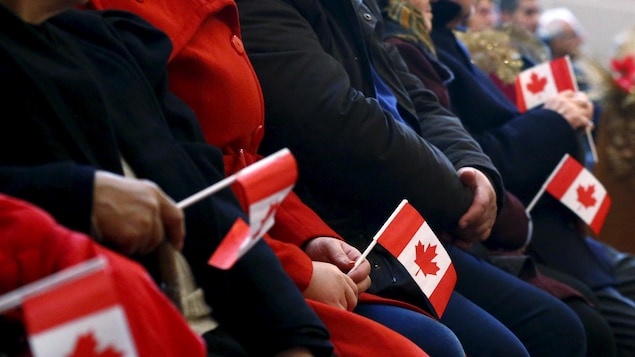During this pandemic, as it has become increasingly difficult to bring people into Canada from abroad, the government has turned to meet its immigration goals for people already in the country.
Although some of the new permanent residents this year are immigrants and refugees who arrived in Canada via traditionalists
Ottawa also allowed temporary residents to obtain permanent residence.
In a year-end interview with The Canadian Press, Immigration Minister Sean Fraser said these measures are tailored to address issues related to the pandemic, but that they may be useful after the pandemic has passed.
He cited as an example the Guardian Angel Program, which granted permanent residence to asylum seekers who worked in the health sector, particularly in CHSLDs in Quebec.
In his letter, the Prime Minister asked Mr. Fraser to continue this approach. During this pandemic we have learned some things that we can embrace in the future
Minister said.
Last month, the government granted 47,434 permanent residence; The Liberals are thus far from their ambitious goal of 401,000 permanent residents this year with 39,629 residents. And that goal will increase in 2022: The Canadian government hopes to welcome 411,000 new permanent residents by the end of next year.
permanent residents to fill the shortfall
While the arrival of new immigrants to Canada is a central pillar of the government’s plan to address the country’s labor shortage, Minister Fraser has argued that the other economic case for retaining temporary residents is just as strong.
He explained that when temporary visas expire, employers must find new candidates to train and fill the job that person just left. The people who are already here and who have become permanent residents are sure to prevent the problem from getting worse.
Fraser said results from programs that have had an impact on employment have generally been positive, but the government has yet to consider this before committing to any particular path.
The minister also said the government has not abandoned more traditional migration flows, which he says will resume once the pandemic subsides and restrictions at international borders are eased.
Long processing times
Another legacy of the pandemic on sustainable migration is the massive backlog of 1.8 million applications awaiting processing. The government has been criticized by opposition parties for allowing this backlog to increase. Finance Minister Chrystia Freeland’s December economic update set aside $85 million over the next fiscal year to address it.
Fraser described the funding as a bridge to help administrators process more applications faster, while the administration finishes the job of digitizing its legacy system.
The current paper-based system means that if someone wants to check the status of their application, they have to call the deputy, who contacts the minister’s office, who contacts the immigration official, who pulls the file… from the workbook.
Fraser is considering a system in which candidate spouses can check their status directly online. We are in the midst of the most significant update to the Canadian immigration system since its inception
, confirmed.
Work on digitizing documents has already begun, but it may take a few years for the system to be fully operational.
However, Fraser expects that the announced temporary funding and increased digitization of the system will allow Canada to maintain the large number of new arrivals through the remainder of the pandemic.
If the government is to continue to grow from there, I expect that we will have the ability to do much more than we are doing today, at an all-time high.
, did he say.

“Alcohol scholar. Twitter lover. Zombieaholic. Hipster-friendly coffee fanatic.”


